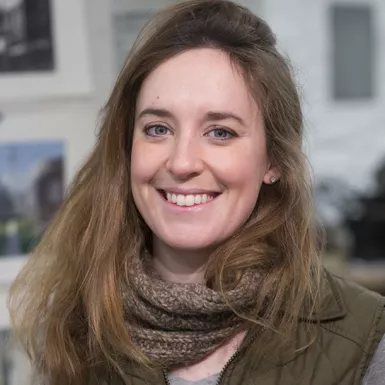
As a representational landscape artist, Weeks’ practice combines painting on site with continued work in the studio. Both locations present challenges. Painting in the landscape is tantamount to fielding a thousand questions simultaneously, with so many tones and forms requiring attention at once. Back in the studio, the test turns to reworking the piece, harmonizing its elements to create a successful painting while maintaining the vitality of the original subject.
As a former architecture student, Weeks tends towards structured motifs by incorporating manmade forms or finding defined geometries in pure landscape. While she frequently paints closer to home in Boston, Nantucket, and around New England, traveling and living abroad has extended her range to landscapes across Europe, Africa, and Australasia.
When I consider my approach to painting, I think about a lecture given by Alexander Nemerov, History of Art professor, on the subject of phenomenology. He spoke of viewing the world through a child’s eyes, as if seeing every element in it for the first time. As a representational painter, I retain and hope never to lose that approach to the landscape around me.
I believe that no light condition or atmosphere is to be taken for granted, and that even the most mundane objects command one’s scrutiny. As a synesthete, I process the auditory as well as the visual world through color, and it’s most often the interplay of chroma through light and shadow that attracts me to a given subject.
While I’m happiest when working outdoors, my practice combines painting on site with continued work in the studio. Both locations present challenges. Painting in the landscape is tantamount to fielding a thousand questions simultaneously, with so many tones and forms requiring your attention at once. Back in the studio, the test turns to reworking the piece, harmonizing its elements to create a successful painting while maintaining the vitality of the original subject.